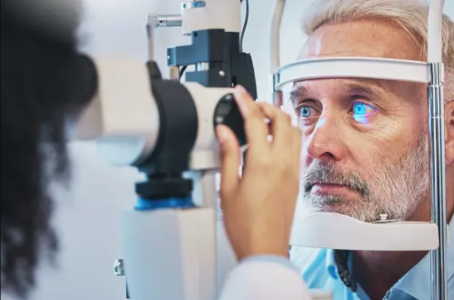Study reveals 23 per cent skip eye care services due to financial hurdles
By
Gian T
- Replies 11
As we age, our eyesight often begins to deteriorate, underscoring the importance of regular eye care in preserving our quality of life.
Unfortunately, rising costs associated with these services led many to forego seeing an eye doctor.
This trend raises concerns about the potential long-term consequences for vision health and overall well-being.
A recent study highlighted that many Australians, particularly those without private health insurance, skip necessary treatments.
Researchers from the Centre for Eye Health in Sydney's east sounded the alarm after discovering that approximately 23 per cent of patients were avoiding health care and optometry services due to financial barriers.
This figure is even more alarming for those requiring specialist eye care, with over 25 per cent foregoing treatment.
The study, co-authored by Dr Angelica Ly, found a significant increase in out-of-pocket costs for eye care over the past decade.
This expense rise likely impacted many Australians, with up to 82 per cent having had an eye examination in the past two years.
The median out-of-pocket cost for specialist services in 2024 was $96; less than 19 per cent of ophthalmology services were bulk-billed through Medicare.
‘Our research shows that more support is needed, especially for people with poor self-rated general health or without private hospital health insurance,’ she said.’ Dr Ly stated.
The study, conducted by Dr Ly and co-author Rene Cheung, suggested:
‘Overall, these findings indicate that current collaborative eye care models may be improved by providing additional support for individuals who are in poorer health or do not have private health insurance,’
‘Additionally, public health policies need to use eye care-specific strategies to optimise access to eye care.’
Factors contributing to lesser healthcare affordability include being female or young, having a long-term health condition, living outside metropolitan or regional areas, and socio-economic disadvantage.
The findings were published in the Sax Institute Journal of Public Health Research and Practice.
Similarly, in health news, prescription medication costs have been capped for the upcoming financial year, with prices frozen for pensioners and concession card holders.
Additional health measures were also outlined in the federal budget. More details on this can be found here.
 Have you taken the time to see an Ophthalmologist? Have you noticed any changes in your vision lately? We’d love to hear your stories in the comments below.
Have you taken the time to see an Ophthalmologist? Have you noticed any changes in your vision lately? We’d love to hear your stories in the comments below.
Unfortunately, rising costs associated with these services led many to forego seeing an eye doctor.
This trend raises concerns about the potential long-term consequences for vision health and overall well-being.
A recent study highlighted that many Australians, particularly those without private health insurance, skip necessary treatments.
Researchers from the Centre for Eye Health in Sydney's east sounded the alarm after discovering that approximately 23 per cent of patients were avoiding health care and optometry services due to financial barriers.
This figure is even more alarming for those requiring specialist eye care, with over 25 per cent foregoing treatment.
The study, co-authored by Dr Angelica Ly, found a significant increase in out-of-pocket costs for eye care over the past decade.
This expense rise likely impacted many Australians, with up to 82 per cent having had an eye examination in the past two years.
The median out-of-pocket cost for specialist services in 2024 was $96; less than 19 per cent of ophthalmology services were bulk-billed through Medicare.
‘Our research shows that more support is needed, especially for people with poor self-rated general health or without private hospital health insurance,’ she said.’ Dr Ly stated.
The study, conducted by Dr Ly and co-author Rene Cheung, suggested:
‘Overall, these findings indicate that current collaborative eye care models may be improved by providing additional support for individuals who are in poorer health or do not have private health insurance,’
‘Additionally, public health policies need to use eye care-specific strategies to optimise access to eye care.’
Factors contributing to lesser healthcare affordability include being female or young, having a long-term health condition, living outside metropolitan or regional areas, and socio-economic disadvantage.
The findings were published in the Sax Institute Journal of Public Health Research and Practice.
Similarly, in health news, prescription medication costs have been capped for the upcoming financial year, with prices frozen for pensioners and concession card holders.
Additional health measures were also outlined in the federal budget. More details on this can be found here.
Key Takeaways
- Researchers highlighted the issue of patients avoiding necessary eye care treatments due to cost barriers, with about 23 per cent avoiding general and optometry services for this reason.
- The study suggested that more support is required for those without private hospital health insurance, particularly as the out-of-pocket costs for eye care have increased over the past decade.
- The median out-of-pocket cost for specialist eye care services in 2024 was $96; less than 19 per cent of ophthalmology services were being bulk-billed through Medicare.
- Factors such as being female, young, having long-term health conditions, living outside metropolitan or regional areas, and socio-economic disadvantage were also linked to lesser healthcare affordability.








